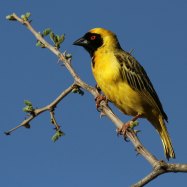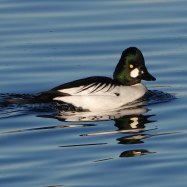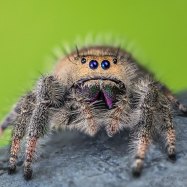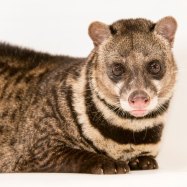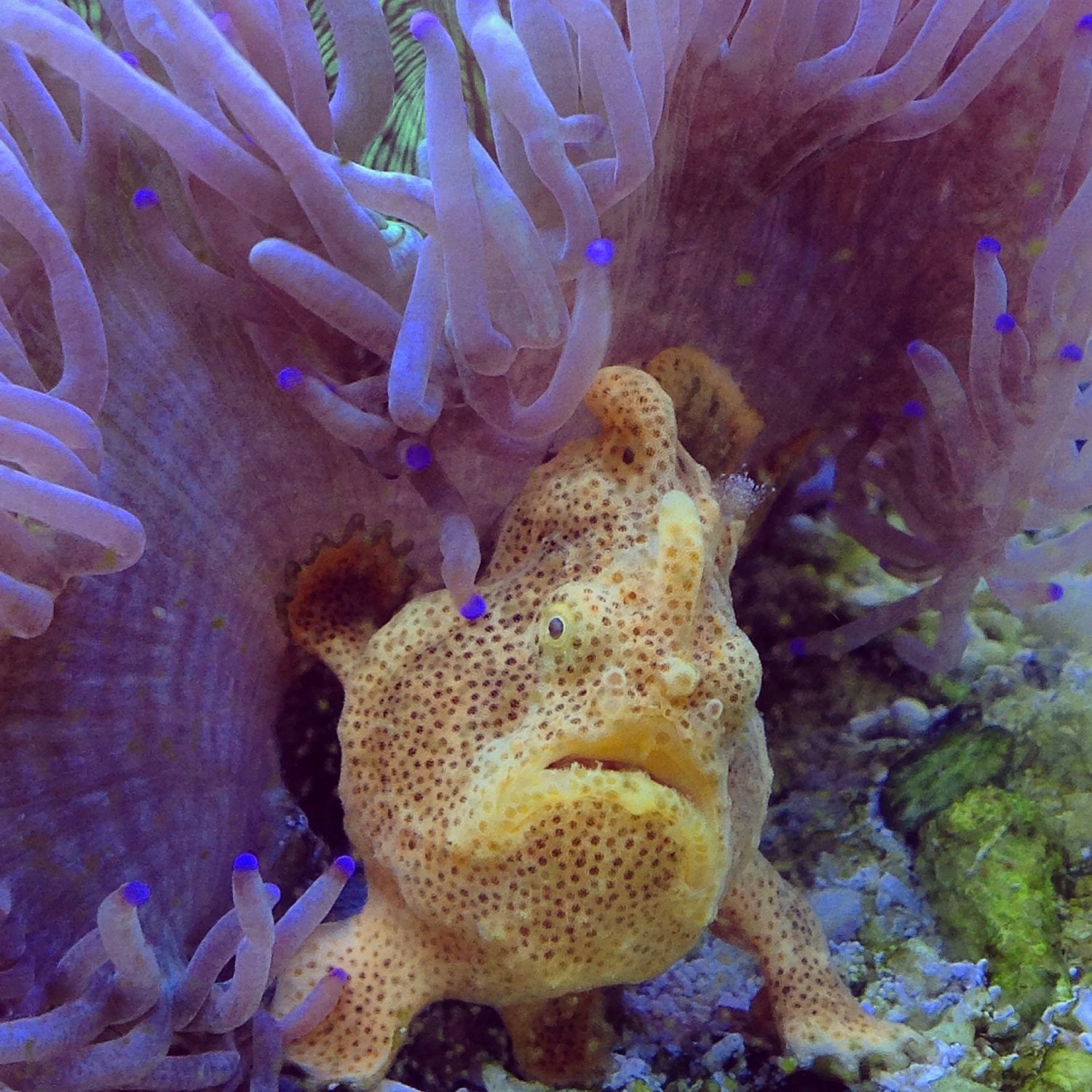
Frogfish
Up to 30 centimeters
The frogfish is a fascinating creature found in coral reefs, seagrass beds, and mangroves. With a body shape that is short, stocky, and covered in fleshy appendages, this member of the Antennariidae family can grow up to 30 centimeters in length. Its unique appearance and hunting techniques make it a must-see for divers and wildlife enthusiasts. #Frogfish #CoralReefs #SeagrassBeds #Mangroves #Antennariidae
Animal Details Summary:
Common Name: Frogfish
Kingdom: Animalia
Habitat: Marine
The Unbelievable World of Frogfish: Masters of Disguise
Underneath the vast blue ocean lies a world of wonders and mysteries waiting to be discovered. With over 70% of Earth's surface covered in water, it's no surprise that there are many fascinating creatures that thrive and survive in the depths of the ocean. One such creature is the frogfish, an extraordinary fish known for its unmatched ability to disguise itself.Scientifically known as Antennarius, frogfish are part of the animal kingdom, belonging to the phylum Chordata and class Actinopterygii Frogfish. They are members of the Lophiiformes order and the Antennariidae family. These interesting creatures can be found in various marine habitats, and are famous for their unique feeding method and ability to blend with their surroundings.
The Art of Camouflage
Frogfish are experts in the art of camouflage. Their survival heavily depends on their ability to blend in with their surroundings, primarily for hunting and protection purposes. They have the uncanny ability to change color, shape, and even texture to match their environment, allowing them to remain undetected by predators and catch unsuspecting prey.Their camouflage technique is so well-developed that they can even mimic the coral or sponge they are perched on, making it almost impossible for predators to spot them. Adding to their disguise, their skin is also covered in small protuberances, making them appear like algae or rocks. This remarkable ability to blend in gives the frogfish a significant advantage in the underwater world.
Ambush Predators
Frogfish are known as expert ambush predators Firefly Ball Python. They have a unique way of hunting where they lie camouflaged and use a special appendage on top of their head called an esca. This modified dorsal fin acts as a lure, resembling small prey like worms or fish, and attracts curious victims to their trap.Once a prey gets close enough, the frogfish strikes with an incredible speed and force, sucking in its prey with its big mouth. Their mouth can expand to the size of their own body, allowing them to devour prey larger than themselves. This ambush strategy is incredibly successful as frogfish can remain still for long periods, blending in with their surroundings until the perfect moment to strike presents itself.
A Splashy Global Distribution
Frogfish are widely distributed around the world, with a presence in many of the Earth's oceans and seas. They can be found in both tropical and temperate waters, and their habitat usually includes coral reefs, seagrass beds, and mangroves. Due to their ability to camouflage and blend in with their surroundings, frogfish can be challenging to spot by divers and snorkelers, making them mysterious and elusive creatures.Frogfish also have different colors and patterns depending on their location. In warmer waters, they tend to have brighter and vibrant colors, while in colder waters, they have muted colors better suited for camouflage. Some species are also found to change color depending on their mood or environment, adopting a darker color when stressed or agitated.
Not Just Your Average Fish
Frogfish are uniquely shaped and have distinct body features that set them apart from other fish species. They have short, stocky bodies covered in fleshy appendages called spinules that resemble small tufts of seaweed. These spinules serve as an added layer of camouflage, further blending them with their surroundings.They also have a large mouth and flared jaws, giving them a comical and almost frog-like appearance. This is where they get their common name, frogfish. Their pectoral fins are also designed to resemble feet, allowing them to walk along the ocean floor rather than swim.
A Surprising Size
Although they may seem small, frogfish can reach sizes of up to 30 centimeters in length. Depending on the species, their size can vary, but on average, they are around 10 to 25 centimeters long. Interestingly, their size also affects their camouflage, as smaller species tend to blend in better with smaller coral or objects, while larger species can mimic bigger objects like rocks or sponges. Despite their size, frogfish are formidable predators, and their unique abilities make them top hunters in their underwater world.From Global to Local
These fascinating creatures can be found in many countries around the world, from tropical locations like Indonesia, the Philippines, and Australia to colder climates like the United Kingdom and Norway. In Indonesia, you can spot them in the Komodo National Park, where they frequently inhabit the vibrant coral reefs. In the Philippines, they can be found in the Anilao region, famous for its macro marine photography. Along the coast of Australia, frogfish can be spotted in the Great Barrier Reef, a world-renowned diving destination. And in the chilly waters of the United Kingdom, these creatures can be found in the Lundy Island Marine Nature Reserve, where they live on sandy seabeds.An Endless Cycle of Life
Frogfish have a fascinating life cycle, starting with their mating ritual. Male frogfish attract females with their esca, displaying different colors and patterns to attract a mate. Once fertilized, the female releases her eggs into the water, where they float and hatch into tiny larvae. The larvae then develop into a tiny version of the adult frogfish, fully equipped with their camouflage abilities.As frogfish grow older, they also change color and pattern, adapting to their environment and becoming better at blending in with their surroundings. Despite these changes, they remain solitary creatures, only coming together during the mating season.
A Unique and Vulnerable Species
Frogfish, like many other marine species, are facing threats to their survival. While they have the amazing ability to camouflage themselves, they are still vulnerable to predators and environmental changes. Overfishing and pollution are major threats to frogfish, as they are often caught as bycatch in fishing nets and affected by the destruction of coral reefs and other marine habitats.Conservation efforts are being made to protect these fascinating creatures, including educating fishermen about sustainable fishing practices and protecting coral reefs. As more people become aware and appreciate the intricate and fragile ecosystem of the ocean, we can hope to see more of these incredible creatures thrive.
In summary, frogfish are unique, fascinating, and elusive creatures that continue to amaze and surprise us with their unmatched camouflage abilities. With their funny appearance and curious behaviors, they capture the hearts of many divers and marine enthusiasts. As we continue to learn more about these incredible creatures, let us also strive to protect their fragile underwater world, ensuring that future generations can also marvel at their wonder.

Frogfish
Animal Details Frogfish - Scientific Name: Antennarius
- Category: Animals F
- Scientific Name: Antennarius
- Common Name: Frogfish
- Kingdom: Animalia
- Phylum: Chordata
- Class: Actinopterygii
- Order: Lophiiformes
- Family: Antennariidae
- Habitat: Marine
- Feeding Method: Ambush Predators
- Geographical Distribution: Global
- Country of Origin: Various
- Location: Coral Reefs, Seagrass Beds, Mangroves
- Animal Coloration: Variable; Can Change Color to Blend with Surroundings
- Body Shape: Short, Stocky, and Covered in Fleshy Appendages
- Length: Up to 30 centimeters
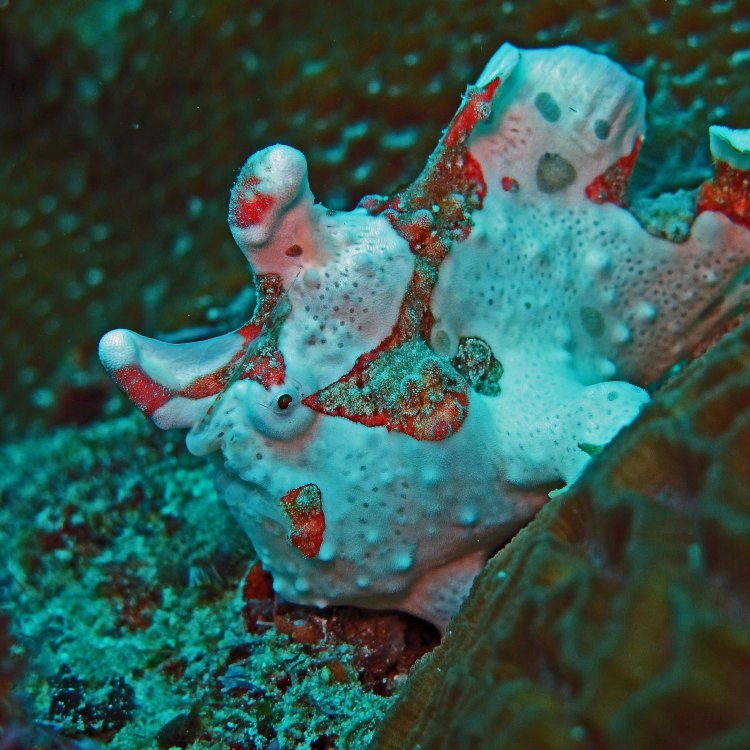
Frogfish
- Adult Size: Varies Across Species; Typically Small to Medium Sized
- Average Lifespan: Up to 3 years
- Reproduction: Sexual
- Reproductive Behavior: External Fertilization
- Sound or Call: None
- Migration Pattern: Some Species Undertake Dispersal
- Social Groups: Solitary
- Behavior: Slow Moving, Camouflaged, and Patient Predators
- Threats: Habitat Loss, Fishing, Pollution
- Conservation Status: Varies Across Species; Many are Data Deficient
- Impact on Ecosystem: Maintain Balance in Coral Reef Communities
- Human Use: Popular in Aquarium Trade
- Distinctive Features: Camouflage Ability and Modified Dorsal Fin
- Interesting Facts: Frogfish can swallow prey larger than their own body size
- Predator: Few natural predators due to camouflage

Antennarius
The Fascinating World of Frogfish: Nature's Masters of Camouflage
The ocean is full of wondrous creatures, each with their own unique features and behaviors. One such creature that has been capturing the attention of marine biologists and scuba divers alike is the frogfish. These strange-looking fish are masters of disguise, equipped with a range of adaptations that make them incredibly efficient hunters and elusive prey. In this article, we will delve into the fascinating world of frogfish, exploring their distinctive features, behavior, and impact on the ecosystem PeaceOfAnimals.Com.Despite their name, frogfish are not actually related to frogs. They belong to the order Lophiiformes, which includes over 50 species and can be found in tropical and subtropical waters around the world. They are known for their unusual appearance, with a stocky body, wide mouth, and modified dorsal fin that resembles a lure.
Adult frogfish can vary in size depending on the species, ranging from just a few centimeters to over 30 centimeters in length. Most are small to medium-sized, making them a popular target for aquarium enthusiasts. However, in the wild, frogfish have an average lifespan of up to three years, with some species known to live even longer.
In terms of reproduction, frogfish follow a sexual reproduction method, with males and females coming together to fertilize eggs externally. This process usually occurs during the mating season, which varies across species. However, unlike other marine animals that produce large numbers of eggs, frogfish produce a relatively small number, ranging from a few dozen to a few hundred Fishing Spiders.
One of the most unique and fascinating aspects of frogfish is their reproductive behavior. Female frogfish have been observed producing a sticky mucus-like substance that they deposit onto the seafloor. Males then use this mucus to create a nest, where they will guard and fertilize the eggs until they hatch. This type of external fertilization is rare in marine animals and is one of the many remarkable adaptions that make these fish stand out in the underwater world.
Unlike many other marine animals, frogfish do not have a sound or call to communicate with one another. Instead, they use their highly developed camouflage abilities to blend in with their surroundings and avoid detection by predators. This behavior has earned them the nickname “anglerfish” due to their ability to lure prey with their modified dorsal fin.
Frogfish are solitary animals, often hiding in crevices or camouflaging themselves in the sand or coral reef. They are slow-moving creatures, using their fins to “walk” along the seafloor and patiently waiting for their prey to come within striking distance.
In terms of diet, frogfish are opportunistic predators, meaning they will eat almost anything that crosses their path. Their diet typically consists of smaller fish, crustaceans, and mollusks, but they have been known to consume prey much larger than themselves. This is due to their impressive ability to expand their mouths to up to twice their body size, allowing them to swallow prey whole.
Despite their efficient hunting capabilities, frogfish face many threats in the wild. One of the biggest threats is habitat loss, as coral reefs, their natural habitats, are rapidly declining due to climate change and human activities. Additionally, frogfish are also affected by overfishing and pollution, which can disrupt their delicate marine ecosystem. As a result, many species of frogfish are currently listed as data deficient on the IUCN Red List, making it difficult to accurately assess their populations and conservation status.
While frogfish may seem like a small and insignificant part of the marine ecosystem, they play a vital role in maintaining balance among coral reef communities. As predators, they help control the populations of smaller fish and maintain the health of the coral reef, which is essential for the survival of other marine species.
As humans, we are not immune to the charm of these fascinating fish. Frogfish are popular in the aquarium trade, with their unique appearance and interesting behavior making them a favorite among collectors. However, their popularity in the trade has led to concerns about over-collection and the impact on wild populations.
Aside from their impressive camouflage abilities and unusual behavior, there are many other interesting facts about frogfish that make them stand out in the underwater world. For example, some species of frogfish have been observed utilizing tools, such as carrying shells or sponges to protect themselves while moving. This behavior has been seen in other animals but is rare among fish species.
One of the most remarkable things about frogfish is their ability to change colors and patterns to match their surroundings. This is achieved through chromatophores, specialized cells in their skin that contain color pigments and can expand or contract to create different colors and patterns. With this adaptation, frogfish can blend seamlessly into their environment, making them nearly invisible to both predators and prey.
Due to their exceptional camouflage, frogfish have few natural predators in the wild. However, they are occasionally preyed upon by larger fish, such as groupers and other predatory species. Despite these threats, frogfish have survived and thrived in the ocean for millions of years, a testament to their incredible adaptations and survival instincts.
In conclusion, the world of frogfish is a truly fascinating one, full of unique features and behaviors. These masters of camouflage have captured the curiosity of many, and as we continue to explore and learn more about these elusive creatures, we must take steps to protect their fragile marine ecosystem. With their important role in maintaining balance within coral reef communities, it is essential to recognize the impact that human activities have on these creatures and work towards preserving their natural habitats. Let us continue to marvel at the incredible adaptations and survival techniques of the frogfish, a true marvel of the ocean.
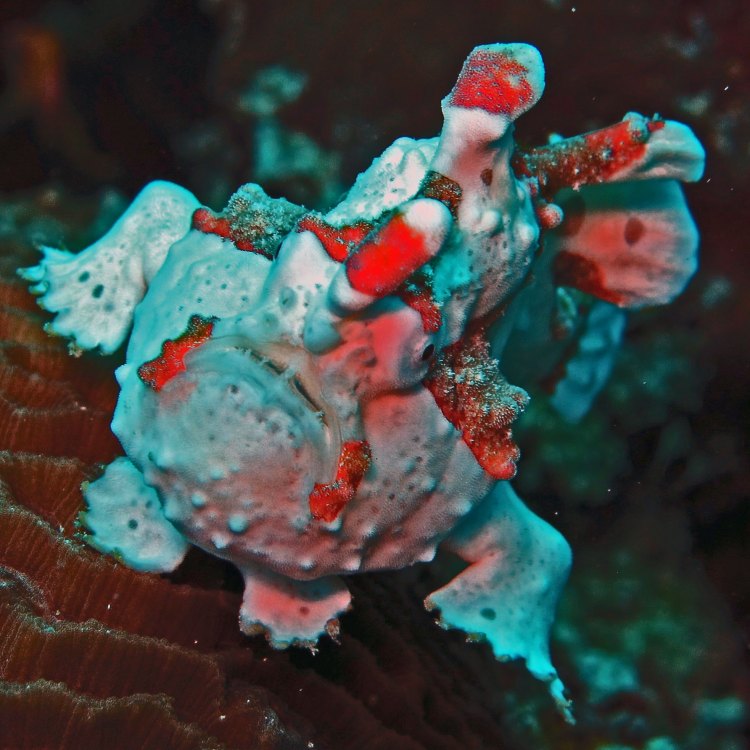
The Unbelievable World of Frogfish: Masters of Disguise
Disclaimer: The content provided is for informational purposes only. We cannot guarantee the accuracy of the information on this page 100%. All information provided here may change without prior notice.



